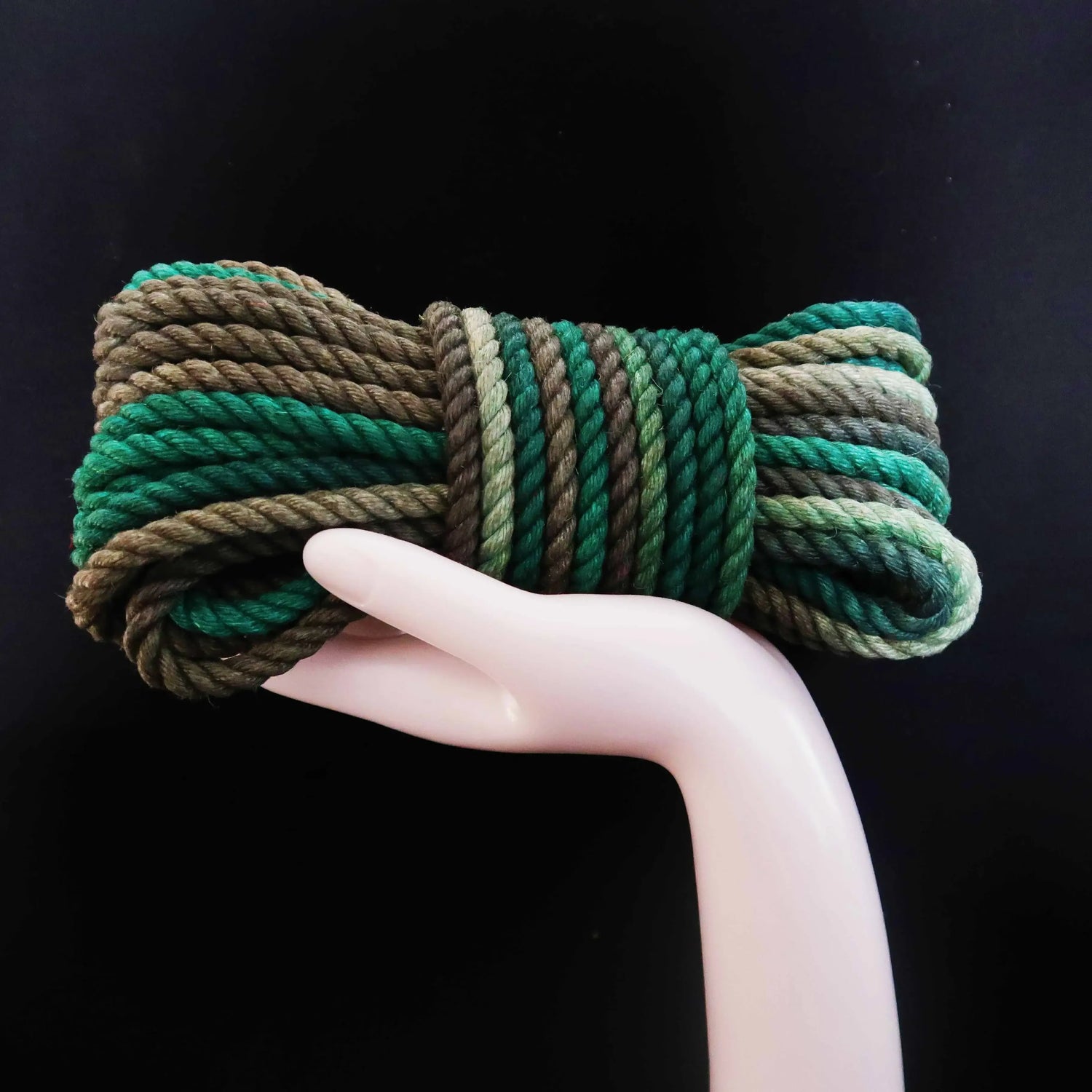If you have been pondering the question, "Are jute and hemp identical?" then this is the perfect spot for you!
Although hemp and jute share common traits such as their compostable, recyclable, and biodegradable properties, there are distinctions between the two fibers that can help you choose the most appropriate one for your requirements.
In this discussion, we will delve into the key disparities between hemp and jute:
Jute
For many people jute rope is the traditional rope for shibari. Fully-treated jute rope is soft but still retains its bite! Its a good choice for people who like a more comfortable Jute rope. For those who prefer a rope with more of a bite and more crunch, dry-treated is a perfect choice. Some people find jute a little scratchy - depending on the person this can be a positive or a negative! Jute rope often leaves rope marks on the skin.
Hemp
Hemp rope is softer and heavier than jute and is also stronger. It is less scratch than Jute and gentler on the skin. This extra weight makes a difference to how it feels to tie with hemp rope, it feels ‘slower’, compared to the rapid flinging around of Jute rope - although for some people this is a difference which isn’t particularly noticed some experienced riggers pick their rope type according to the ‘feel’ of a rig they want to do. Because the yarn for my hemp is white, I am able to offer it in both bright and pastel colours. Some people prefer hemp, some people prefer jute! It really is a personal preference.

Hemp:
- Strong
- Becomes very soft and smooth
- Lasts forever
- Tooth of the rope holds knots well
- Heavy
- Has a little stretch
- Washable
- Moves quickly and smoothly when tying
- No stretch
- Unrivaled tooth for frictions and knots
- Traditional rope of Japanese style bondage
- Lasts about a year with weekly use
- Becomes soft but always a bit scratchy

